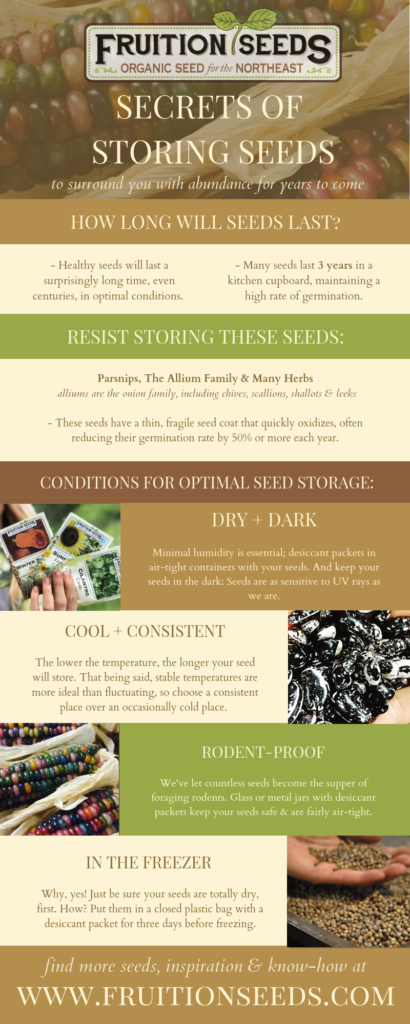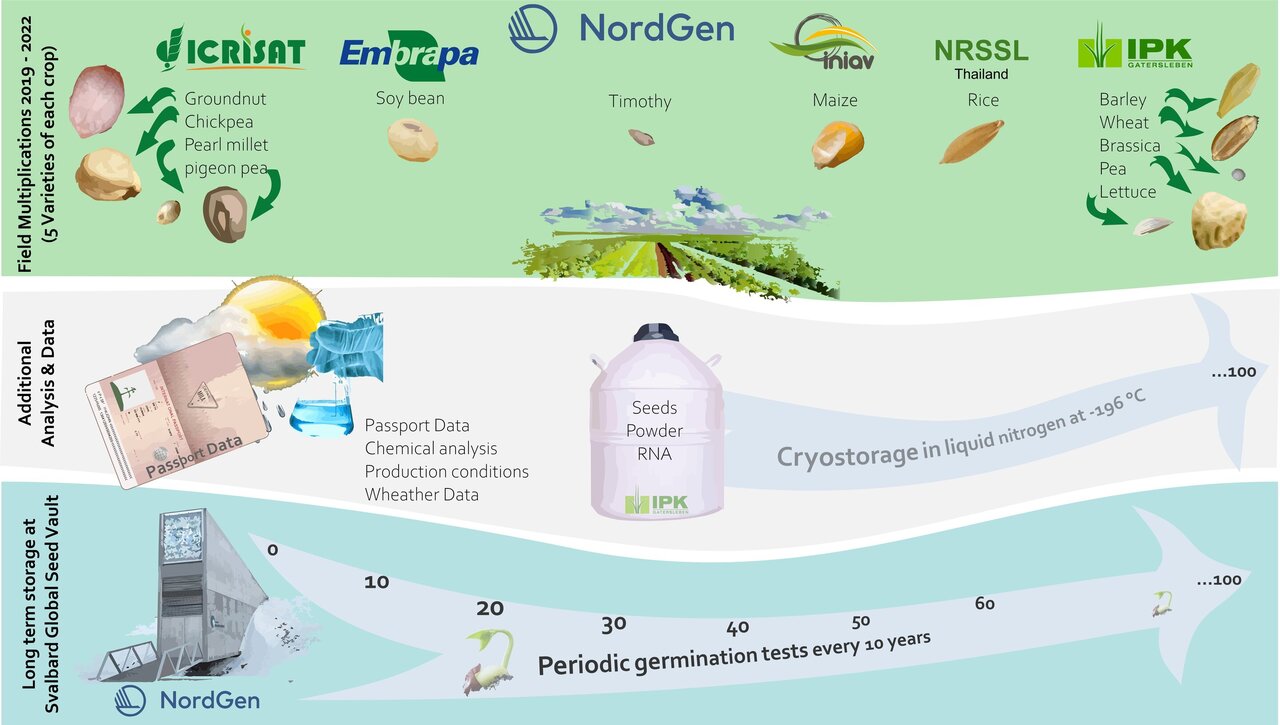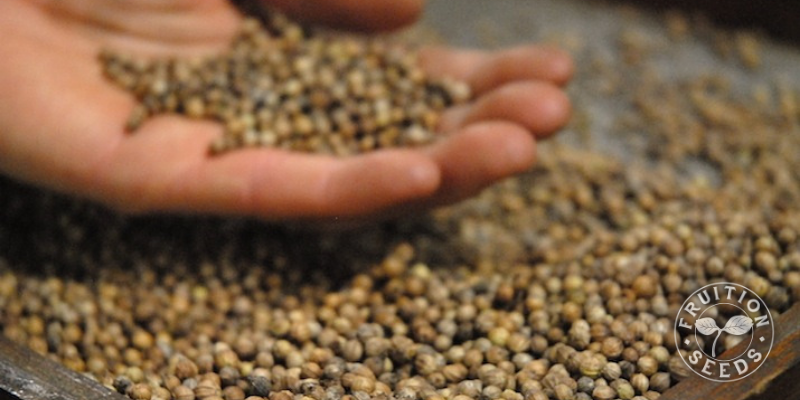As the effects of climate change become increasingly clear, it is increasingly important to consider how we can protect and preserve the world’s biodiversity. One possible solution is the use of seed banks, which are repositories of rare and endangered plant species that can be used to repopulate areas that have been damaged by environmental issues. But how long will these seed banks last, and what measures can be taken to ensure their long-term viability? In this blog post, we’ll explore the current state of seed banks and the potential solutions that could help keep them around for the long haul.
A lot of people are talking about how important it is to preserve natural habitats, plant species, and genetic diversity. But what many don’t realize is that we also depend on our local seed bank for survival!
Seed banking was introduced in the early 1900s as a way to protect crops from famine or extinction. Since then, it has become an integral part of agriculture, as well as biodiversity conservation.
Agricultural crop seeds are often treated like gold because they can take decades to degrade and even break down completely. This is why most large institutions have their own seed bank; scientists save old strains, keep them alive, and prepare for the future.
Nature does not always care for us the same way we do for each other, but she never fails to inspire awe and wonder. Becoming more aware of the nature around you and protecting it is one of the best things you can do for yourself and those who come after you.
It is essential to understand the importance of preserving the food supply we have today before it is gone.

Can you store seeds for 20 years?
Are you thinking about storing seeds for the long term? If so, you may be wondering just how long you can store seeds before they become unusable. The answer may surprise you: You can store seed for up to 20 years – and, in some cases, even longer.
When it comes to seed-storing, there are many factors to consider. First, it’s important to note that the viability of seeds can decrease over time. The longer they’re stored, the lower the chance of germination. That’s why it’s important to purchase high-quality seeds and store them properly.
Here are a few tips for storing seeds for the long term:
1. Keep them cool and dry. The key to storing seeds for the long term is to keep them cool and dry. The ideal temperature for storing seeds is between 40-50°F. If you don’t have access to a refrigerator or freezer, you can store seeds in a cool, dark closet, pantry, or basement.
2. Use an airtight container. When storing seeds, it’s important to keep them in an airtight container, such as a Mason jar, to prevent moisture and humidity from entering. For extra protection, you can also place the container inside a resealable plastic bag.
3. Label your seeds. It’s also important to label your seeds with the name, type, and date of purchase. That way, you can keep track of when you need to re-purchase.
4. Rotate your seeds. To ensure your seeds stay viable for longer, it’s important to rotate your inventory every two years. That means purchasing new seeds and discarding the oldest ones.
Following these simple tips can help you store seeds for up to 20 years – and, in some cases, even longer. With the right preparation, you can ensure the viability of your seeds for the long term.
How long do garden seeds last?
Do you ever wonder how long your garden seeds will last? If you’re like most gardeners, you’ve probably invested a lot of time and energy into planting your garden and you want to make sure that your seeds remain viable for as long as possible. Fortunately, understanding how long garden seeds last can help you get the most out of your gardening efforts.
When it comes to the longevity of your garden seeds, there are two factors that will have a major impact on their survival: genetic differences and environmental conditions.
Genetic Differences
The genetic makeup of your garden seeds will have a significant impact on how long they will last. Different seeds have different levels of viability and longevity, so it’s important to understand the differences between them. For example, some seeds may be genetically programmed to last longer than others, while some may have a shorter lifespan.
When it comes to the genetics of your garden seeds, there are three main types: annuals, biennials, and perennials. Annuals will typically last for one season, while biennials will last for two seasons and perennials will last for multiple seasons.
Environmental Conditions
The second major factor that will affect the longevity of your garden seeds is the environmental conditions under which they are stored. Proper storage conditions are essential for ensuring that your garden seeds remain viable for as long as possible.
Ideally, your garden seeds should be stored in a cool and dry area. If they’re exposed to excessive heat or moisture, they may suffer damage and be rendered unusable. Additionally, make sure to store your garden seeds in an airtight container to protect them from pests and other potential contaminants.
In general, you can expect your garden seeds to last anywhere from a few months to several years, depending on the specific genetic makeup and environmental conditions in which they are stored.
How to Store Vegetable Seeds?
Storing vegetable seeds is a crucial step in ensuring a successful harvest. It not only helps you save money on seed purchases for the next season, but also helps guarantee that you’re getting the best quality seeds for your garden. If you want to get the most out of your vegetable garden, it’s important to know how to store your vegetable seeds properly.
The first step in storing vegetable seeds is to make sure they’re dry before you store them. This means that you should allow the seeds to dry out on a paper towel or in a dry place before you store them. It’s also important to make sure that the seeds are completely dry before you put them in storage. If they’re still damp, they may not last as long as they should.
Once the seeds are dry, you should package them in airtight containers to keep them safe. It’s best to use glass jars or plastic bags for this purpose. Make sure to label each container clearly so that you know which type of vegetable seeds are in it.
Once you’ve stored your vegetable seeds, you should store them in a cool, dark place. The ideal temperature for storing vegetable seeds is 40-50 degrees Fahrenheit. You should also make sure that the area is free from moisture or humidity, as this can cause the seeds to rot.
When it comes time to plant your vegetable seeds, you should check on them to make sure they’re still viable. If they don’t germinate, you should discard them and purchase new ones. It’s always best to plant the freshest seeds available for the best results.
Storing vegetable seeds properly will ensure that you get the most out of your garden every season. By following these tips, you can make sure that your vegetable seeds are stored correctly and last for many years.

How long can a seed last in the soil seed bank?
Seeds are the foundation of life, providing the essential resources for plants, animals and humans to survive. As such, it is essential to understand how long seeds can last in the soil seed bank in order to ensure their survival.
When seeds are buried in the soil, they form a dormant seed bank. This seed bank is an important source of biodiversity, allowing new species to take root and grow in an area. As a result, the soil seed bank can have a great impact on the overall health of an ecosystem.
So, how long can a seed last in the soil seed bank? The answer to this question depends on a number of factors, including the type of seed, the climate, and the soil conditions. Different types of seeds have different lifespans; some can last for hundreds of years, while others can only survive for a few months.
In general, seeds that are buried deep in the soil can last for a very long time. This is because the deeper the seed is buried, the more protected it is from environmental factors such as weather, temperature, and other disturbances. Similarly, seeds that are buried in dry, stable soils can also last for a very long time.
On the other hand, seeds that are buried in nutrient-rich soils are more likely to germinate and grow quickly. As a result, they are less likely to survive long enough to be part of the soil seed bank. Furthermore, seeds that are exposed to the elements or that are buried in shallow soils are more likely to be destroyed by environmental conditions or animals.
Overall, it is difficult to predict how long a seed can last in the soil seed bank. Factors such as climate, soil composition, and the type of seed can all have an impact on the seed’s lifespan. As a result, the best way to protect your seeds and ensure their long-term survival is to bury them deep in the soil and in a nutrient-rich environment.
Why Start A Seed Bank?
Starting your own seed bank is an incredible way to give back to the community, promote plant diversity, and preserve agricultural biodiversity. Plus, it’s fun!
Seed banking was first practiced thousands of years ago in Asia where farmers would save their leftover crops in brine or salt for the next season. They would then dry the seeds and store them properly to ensure they did not get contaminated or ruined.
In Europe, people saved their wheat and barley grains in dried milk containers before introducing refrigeration. Since those plants are both cereal (like bread) and drought tolerant (think about how many times you have heard someone talk about “seeds that keepers have”), they use the extra moisture to survive until the next growing season.
With the rise of agriculture as we know it today, most notably after the Agricultural Revolution around 600 AD, there were no longer natural seeding events occurring. Without this process, we may not be here today.
Since we now depend heavily on plants for food, shelter, and medicine, we need to make sure these relationships continue to thrive. Luckily, you can play a major part in creating sustainable futures for our children and future generations.
You can start by donating some of your old seeds at your local seed bank. Then, if you feel more ambitious, visit other nearby farms to see what kind of seeds they have and whether they are still viable.
The Future Of Seed Banks
Over the past decade, there has been an explosion of interest in plant seeds, growing collections of plants that are grown for use instead of being sold as individual products. These collection growths have become organized into what we now refer to as “seeds banks” or “seed libraries.”
Seed banking was popularized by large corporations looking to preserve their proprietary genetic resources through cryogenic preservation. Since then, it has spread across the gardening community due to its low cost and potential to save endangered species biodiversity.
These seed saving initiatives have gone beyond just keeping seeds frozen either! People have experimented with various other storage methods such as dried specimens, fermented extracts, and purified oils. All of these strategies work to preserve DNA structure while also increasing viability of the stored material.

Seed Banks 101
So, what are seed banking facilities and why do they exist?
Seed banking is the practice of saving plant seeds from season to season so that you don’t have to start over every year! This is an especially helpful tip if you love growing plants and flowers!
Most botanical gardens and research institutions have their own seed collections that they keep in very close temperature controlled conditions. These collections grow and develop over time, making it easy for people to access new plants via these resources.
Some even offer them to the public online or at small cost-what a great way to spread the gift of nature!
Landfills across the country are overflowing with old plastic containers. Many of these containers were used to store dried up plant materials before being recycled. While most recycling companies won’t accept plastics unless they can be reworked into other products, many individuals still find uses for these things.
Plant breeders use these leftover bits of material to begin creating more cultivars of plants. By collecting enough samples, we are helping ensure that future generations have all the variations of this flower or tree.
It’s also nice to contribute to our planet by using less waste. Luckily, there are some organizations that work to reuse or recycle all of these remnants as well.
The History of Seed Banking
As we mentioned before, most plants have seeds that contain genetic material for future generations. These genes can be passed down either directly from parent to offspring or indirectly via mutations. For example, if your child has brown eyes they receive this gene pool through their parents’ genetics but not through yours!
Many cultures relied heavily on these gene pools to survive. This is why many developed nations still use plant breeds in agriculture as a way to preserve crop diversity.
For instance, there are over 70 different wheat varieties used around the world. Each variety is known by its color, shape, and size which all contribute to how well it grows and feeds people.
Why You Should Start a Seed Bank
Starting your own seed bank is an incredible way to contribute to our planet’s biodiversity, help save endangered species, and ensure that future generations have access to important genetic resources.
Seed banking was originally designed as a way to preserve crop seeds for use in agriculture. Since then, it has become one of the most effective ways to protect plant diversity from extinction.
Today, there are many organizations around the world that operate as official or non-official seed banks. These institutions collect, conserve, and distribute agricultural and related botanical (plant) seeds to make them more accessible for research and cultivation.
Some seed banks also offer services like germination testing and breeding programs to develop new cultivars – or improved versions of existing ones.
Types of Seed Banks
Recent developments in conservation biology have led to the establishment of different types of seed banking facilities. These are typically categorized by their size, function, and/or geographical area.
Seed banks that only preserve seeds from one species are referred to as “holistic” or “semi-domesticated” because they keep only part of the plant alive. For example, a domesticaed squirrel might be kept away from nuts so it does not learn how to forage them for food.
Some semi-domesticated seed banks focus exclusively on certain crop plants such as fruits (apples, oranges) or vegetables (broccoli). This limits the range of vegetation that individual animals can eat, but it still sets important genetic baseline data.
Other types of seed banks go one step further and also conserve live organisms beyond just seeds. A good example is an animal refuge where young orphaned wildlife is cared for until they are able to survive on their own.
These advanced seed banking practices are very valuable since they preserve both non-living and living components of nature. They also give individuals with no connections to the natural world access to needed biodiversity.
It is hard to estimate how many seed bank facilities there are around the globe, but we do know that most operate at a relatively small scale with limited funding.
Which Seed Banks Are Best?
Recent news about one of the largest seed bank facilities in the world is very concerning for anyone who cares about biodiversity. The facility in question is called Ark Nature, and it was just announced that they are shutting down due to lack of funding.
Ark has been collecting seeds since 2001, and over half a million different plant species have been documented. They also run an educational program through their website focused on educating people about how to use plants for health and sustainable living.
It is important to note that while they do not directly market themselves as a commercial breeding facility, many of their products can be marketed as such. Some examples include “heirloom” tomatoes or peppers, brassica vegetables like broccoli and cabbage, and flax oil.
These types of foods are known for their nutritional value and for providing healthy fats that we consume. Flax oil is especially rich in both omega-3 and -6 fatty acids which help keep our hearts healthy and functioning properly.
